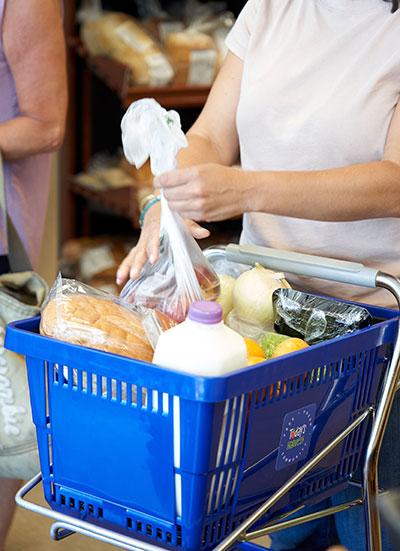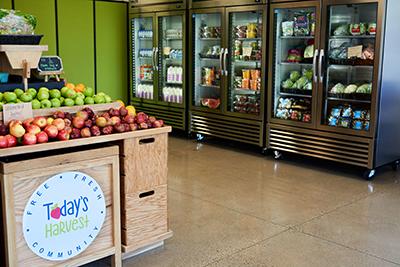
Enabling Choice Fosters Equity and Identity While Reducing Food Waste
Enabling families who are experiencing food insecurity to choose the types and quantities of food they receive makes a huge impact. Allowing choice maintains equity, autonomy and identity while simultaneously reducing food waste and ensuring our communities are well fed.
It’s time to consider SNAP!
The Supplemental Nutrition Assistance Program (SNAP) allows individuals to shop for foods that align with things like cultural food preferences, household size and dietary needs. With SNAP supplemental benefits in hand, foods can be purchased at grocery chains, independent neighborhood stores or local farmers markets to make favorite family meals or newly discovered recipes.
Throughout the pandemic, SNAP – which is the closest thing we have to a silver bullet in the fight against hunger – has bolstered the statewide economy, helped individuals through financial hardships and ensured children, seniors and families are getting adequate nutrition. In July, Governor Tim Walz agreed to protect Emergency SNAP, which bumped up all Minnesota SNAP households to the maximum benefit amount, regardless of income level. Emergency SNAP brought more than $500 million in additional benefits to Minnesota families, grocers and retailers.
The U.S. Department of Agriculture recently modernized the Thrifty Food Plan, which is used to calculate SNAP benefits, to reflect rising food prices and what it costs to feed a family in 2021. This means, starting Oct. 1, 2021, the average SNAP benefit will increase permanently, which will help millions of families across the country, including more than 400,000 Minnesotans currently participating in the program. The update is the biggest in the program’s history and will ensure children, seniors and families can better afford the healthy foods they want and need to thrive.
If you have questions about your current SNAP benefits or your eligibility to receive them if you aren’t currently enrolled, please fill out the SNAP survey form or call 651-209-7963.
New Food Distribution Models Enable Choice
In addition to SNAP, there are innovative food distribution models that let individuals accessing the hunger relief system choose what and how much food they are bringing home.

Today’s Harvest – a new Christian Cupboard Emergency Food Shelf (CCEFS) program – is a low-barrier free food market in Oakdale that opened in May and operates like a traditional store. Individuals grab a shopping cart and fill it with the meats, produce, dairy and bakery items they prefer. There is varying maximum quantity guidance each day based on how much food the market has, but it’s generally completely up to the individual to select desired items.
Shoppers don’t feel a sense of pressure to bring home more or less than what they want or need because people can access the market as often as they’d like – even every day if that’s what works for them.
In its first four months, Today’s Harvest has served more than 2,400 households from 135 different zip codes. More than 50% of Today’s Harvest visitors had never gone to a food shelf before.
“The retail market is really resonating,” said Jessica Francis, executive director of CCEFS. “We’re learning a lot and finding that the level of choice, access and anonymity Today’s Harvest visitors get is proving to be highly successful and engaging.”
What started as an experiential food access model – that only spanned 100 days from idea to grand opening – is becoming an example for other hunger relief organizations. The CCEFS team has been giving tours of Today’s Harvest and is working on a toolkit with information, lessons learned and guidelines for those interested in replicating it in their service area.
Help Today’s Harvest Empower Shoppers
Since opening in May, Today’s Harvest has distributed more than 237,000 pounds of food – all of which is rescued from local grocery stores. Each morning, drivers collect fresh meat, produce, dairy and bakery items from upwards of five different stores, which then need to be sorted by volunteers and put on market shelves.
You can sign up to be a volunteer by visiting todaysharvestmn.org/volunteer, where you’ll be helping food go directly from a store to the homes of people who need it most – usually in the same day.
